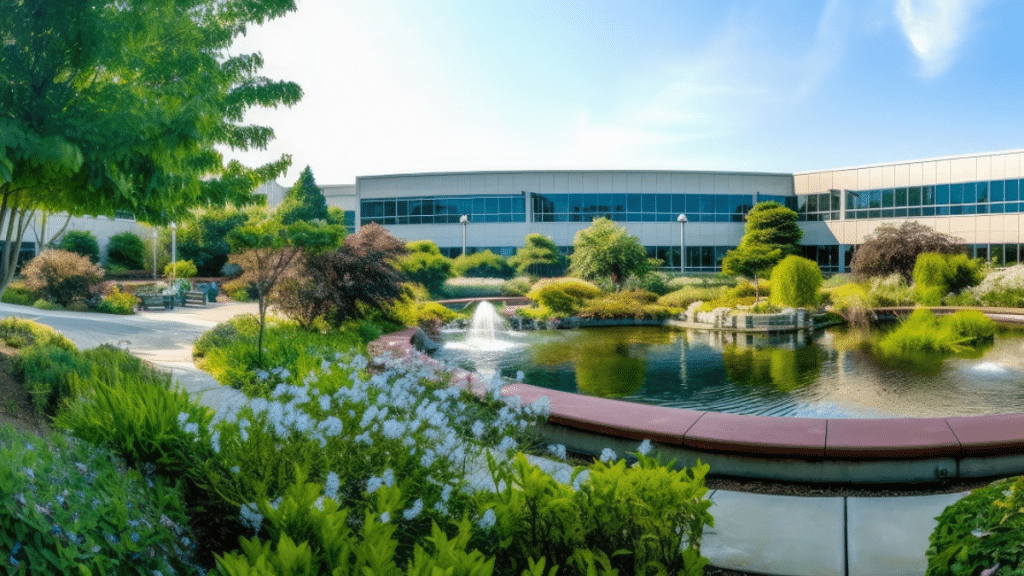Recovering from an illness or injury isn’t just about medical treatments—it’s also about creating an environment that promotes healing. One innovative approach gaining recognition is the use of therapeutic gardens in rehabilitation settings. These specially designed outdoor spaces provide physical, emotional, and psychological benefits that enhance recovery. PAM Health emphasizes the importance of nature in healing, incorporating therapeutic gardens into their patient care strategies. By engaging the senses and encouraging movement, these gardens help patients regain strength, reduce stress, and improve overall well-being.
What Are Therapeutic Gardens?
Therapeutic gardens are carefully designed landscapes that promote healing through natural elements. Unlike traditional gardens, they are structured to accommodate individuals with mobility challenges, offering accessible pathways, sensory-stimulating plants, and calming water features. These spaces are often found in hospitals, rehabilitation centers, and long-term care facilities, providing a serene setting for recovery.
Research has shown that exposure to nature can reduce pain perception, lower blood pressure, and improve mood (National Library of Medicine). When patients interact with plants, listen to running water, or feel the warmth of sunlight, their bodies and minds respond positively, leading to a faster and more comfortable healing process.
The Science Behind Healing Through Nature
Nature-based therapy is not just a trend—it’s backed by science. Studies have found that patients who have access to natural environments experience reduced stress levels, shorter hospital stays, and improved cognitive function (American Psychological Association). Therapeutic gardens engage multiple senses, which stimulates brain activity and enhances neuroplasticity, making them especially beneficial for stroke and brain injury patients.
Sunlight exposure plays a crucial role in regulating circadian rhythms, improving sleep patterns, and boosting vitamin D levels—factors that are essential for overall health. Additionally, the presence of greenery has been linked to increased serotonin and dopamine production, which help combat depression and anxiety, common challenges during rehabilitation.
Physical Benefits of Therapeutic Gardens
Engaging with nature encourages movement, whether it’s walking along a garden path, reaching for a plant, or engaging in light gardening activities. These actions contribute to:
Improved Mobility
Walking on varied surfaces enhances balance and coordination, reducing the risk of falls.
Muscle Strengthening
Gentle gardening tasks such as watering plants or planting flowers help rebuild motor skills.
Pain Management
A calming environment reduces stress-induced pain and promotes relaxation.
Faster Recovery
Studies indicate that patients recovering from surgery or illness heal faster when they spend time in green spaces.
For patients undergoing physical therapy, a therapeutic garden provides a natural and enjoyable setting to practice exercises, making the rehabilitation process feel less clinical and more engaging.
Mental and Emotional Healing
Recovery is not just physical—it’s also mental and emotional. Therapeutic gardens offer a peaceful escape from the stress of medical treatments, allowing patients to reconnect with themselves and their surroundings. The simple act of observing nature, listening to birds, or feeling the breeze can:
Lower Anxiety and Stress
Nature has been proven to reduce cortisol levels, the hormone responsible for stress.
Enhance Cognitive Function
Patients with dementia or brain injuries benefit from sensory stimulation, which aids memory and focus.
Provide a Sense of Control
Choosing to sit, walk, or engage in gardening activities fosters independence in patients.
Boost Social Interaction
Group activities in therapeutic gardens encourage connection and emotional support among patients.
Many rehabilitation centers integrate mindfulness practices, such as guided meditation or breathing exercises, into their therapeutic garden spaces to enhance relaxation and emotional healing.
Incorporating Therapeutic Gardens
Recognizing the profound benefits of nature in recovery, PAM Health integrates therapeutic gardens into its rehabilitation programs. These gardens serve as a vital part of the healing process, providing patients with an alternative form of therapy that complements medical treatments. By allowing individuals to engage with nature in a structured and meaningful way, these spaces contribute to overall well-being and rehabilitation success.
Through personalized therapy sessions, patients are encouraged to interact with their environment, whether through simple walks, light gardening, or sensory exercises. This holistic approach aligns with the growing body of research supporting nature-based rehabilitation.
The Future of Nature-Based Rehabilitation
As more healthcare providers acknowledge the benefits of therapeutic gardens, these spaces are becoming an essential part of rehabilitation design. Future developments may include:
Virtual Nature Therapy
For patients unable to access outdoor spaces, virtual reality can simulate natural environments, providing similar psychological benefits.
Smart Gardens
Integrating technology such as interactive plant care apps or biofeedback systems can enhance patient engagement.
Expanded Research
Ongoing studies will continue to uncover new ways in which nature impacts recovery and overall health.
With increasing recognition of the mind-body connection in healing, therapeutic gardens will likely become a standard feature in hospitals and rehabilitation centers worldwide.
Conclusion
Healing extends beyond medicine, and therapeutic gardens provide a powerful, natural way to enhance recovery. From physical benefits like improved mobility to emotional relief from stress and anxiety, nature plays a crucial role in rehabilitation. PAM Health continues to advocate for the integration of these healing spaces, recognizing their impact on patient well-being. As healthcare evolves, the connection between nature and recovery will only grow stronger, offering patients a holistic and enriching path to healing.

